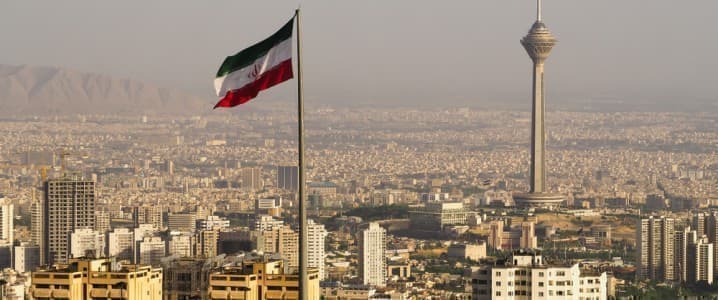After years of back and forth, with talks intensifying in recent months, a new Iran nuclear deal now appears to be a distinct possibility. While this could be great news for a world facing oil and gas shortages, some critics point to the geopolitical dangers associated with such a deal. Nevertheless, Iran has been preparing its oil industry for a swift recovery once an agreement is reached, following months of oil production increases.
With oil prices rising exponentially this year, and several countries worldwide facing oil and gas shortages, the U.S. and other major powers are looking to ensure oil supply while shifting their reliance on Russia. This is one factor that has caused the U.S. to reconsider its stance on a new nuclear agreement, which would allow Iran to recommence largescale oil exports.
Reports earlier this week suggested that a new nuclear deal between the U.S. and Iran was imminent, with positive feedback from Iranian negotiators following recent talks. "We are not far from an agreement," the de facto spokesman for Iran's nuclear-negotiating team Mohammad Marandi told Al Jazeera in mid-August, suggesting the remaining issues would not be difficult to resolve.
Former President Donald Trump exited the previous agreement in 2018, which prompted sanctions on Iran’s oil and rapidly halted much of the country’s exports. While Iran initially adhered to these sanctions, with its oil output falling dramatically from 2018 to 2020, over the last year the country’s oil earnings have soared. Thanks to the use of ghost ships and under-the-table agreements, Iran has been building its relations with several trade partners worldwide, most notably fellow-sanctionee Venezuela. And, in recent months, more countries have openly ignored U.S. sanctions in the face of energy insecurity, leading to a 580 percent increase in Iran’s oil and condensates income from March to July compared with the same period last year.
The reinvigoration of Iran’s oil industry could bring massive changes to the world’s oil outlook. Tamas Varga, an analyst at PVM Oil Associates in London suggested “OPEC could easily produce 30.5 million bpd (barrels per day) if Iran comes back and those barrels are not accommodated.” He added, “Under this scenario, my model shows Brent dipping to $65″ per barrel in the second half of 2023. This would be a dramatic price decrease from $94 a barrel this week.
The reintroduction of Iranian oil to the market would also help divert reliance from any one oil power, with sanctions on Russian oil forcing the U.S. to turn to Saudi Arabia for greater oil supplies in recent months. The release of Iranian oil would make oil prices more competitive and would mean that Saudi Arabia and Iraq are not the two dominant oil powers in the Middle Eastern region.
Iran has been gradually building up its oil supplies in recent months, ready for export should an agreement be reached. There are around 93 million barrels of Iranian crude and condensate on ships in the Persian Gulf according to the ship-tracking firm Kpler, although other estimates suggest it may be nearer 60 to 70 million barrels. There are further onshore oil supplies of around 48 million barrels, according to Kpler. Iran is in a strong position to step into a market that is desperate to replace Russian oil supplies, ready to reclaim its title as an oil giant.
But despite solid steps toward a nuclear deal and the resumption of Iranian oil exports, not everyone is so sure this is a good idea. Trump’s former national security advisor, John Bolton, believes the lifting of sanctions may encourage Iran to partner with Russia. He stated, “I think the immediate consequence, obviously, will be the unfreezing of billions of dollars of Iranian assets, which will go back under their control, with their discretion to spend it on their nuclear program, their support for international terrorism in the Middle East and beyond.” He added, “It’s really a stunning mistake by the Biden administration.”
This line of reasoning has been repeated within Israel, which has stepped up its rhetoric against the deal as its election season heats up. Israeli Prime Minister Yair Lapid expressed his views by saying “This deal isn’t a good deal. It was not a good deal when it was signed back in 2015. Today, the dangers it entails are even greater,”. Israel’s increased pressure on the U.S. may be one of the reasons optimism around the nuclear deal has waned recently.
While this is an extreme response to the nuclear deal, it may be partly true considering a recent report from the International Atomic Energy Agency suggesting that Iran is continuing to enrich its uranium. The report stated, "On 28 August 2022, the Agency verified at FEP that Iran was feeding UF6 enriched up to 2% U-235 into the IR-6 cascade ... for the production of UF6 enriched up to 5% U-235.”
However, critics may need not worry as hopes of a new deal were temporarily thwarted just this Friday as the U.S. responded to the latest Iranian proposal saying it was “not constructive”. A spokesperson from the state department explained “We can confirm that we have received Iran’s response through the EU,” adding, “We are studying it and will respond through the EU, but unfortunately it is not constructive.”
As the U.S. edges ever closer to a new nuclear deal with Iran, with the hope of reinitiating crude imports from the oil-rich nation, critiques suggest that it will be vitally important to establish good relations with Iran if the U.S. hopes to benefit from its oil output. With worries that Iran might turn towards Russia, many countries may look to establish clear partnerships with the sanctioned country even before a nuclear deal is agreed upon.
By Felicity Bradstock for Oilprice.com
More Top Reads From Oilprice.com:
- Kurdistan Could Soon Lose Half Of Its Oil Production
- 95% Of Production At Nigeria’s Main Oil Hub Is Being Stolen
- Liberty Energy Chief Executive: Oil Is Far From Dead

















